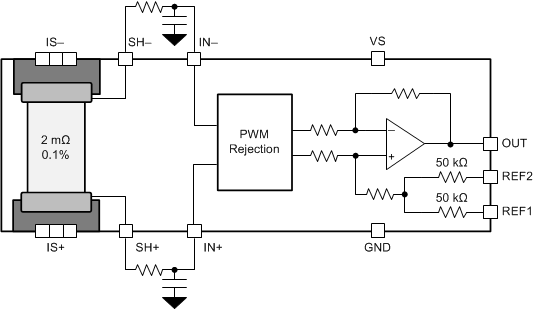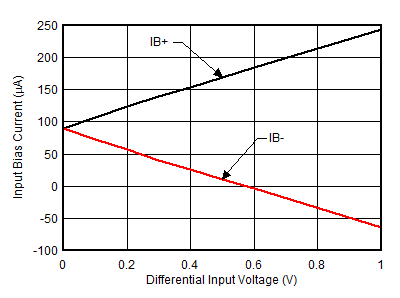SLOS954A July 2018 – December 2018 INA253
PRODUCTION DATA.
- 1 Features
- 2 Applications
- 3 Description
- 4 Revision History
- 5 Device Comparison Table
- 6 Pin Configuration and Functions
- 7 Specifications
-
8 Detailed Description
- 8.1 Overview
- 8.2 Functional Block Diagram
- 8.3 Feature Description
- 8.4
Device Functional Modes
- 8.4.1 Adjusting the Output Midpoint With the Reference Pins
- 8.4.2 Reference Pin Connections for Unidirectional Current Measurements
- 8.4.3 Ground Referenced Output
- 8.4.4 Reference Pin Connections for Bidirectional Current Measurements
- 8.4.5 Output Set to Mid-Supply Voltage
- 8.4.6 Output Set to Mid-External Reference
- 8.4.7 Output Set Using Resistor Divide
- 9 Application and Implementation
- 10Power Supply Recommendations
- 11Layout
- 12Device and Documentation Support
- 13Mechanical, Packaging, and Orderable Information
Package Options
Mechanical Data (Package|Pins)
- PW|20
Thermal pad, mechanical data (Package|Pins)
Orderable Information
9.1.1 Input Filtering
NOTE
Input filters are not required for accurate measurements using the INA253. For most accurate results, do not use filters at the IN+ and IN– inputs. However, If filter components are used on the input of the amplifier, follow the guidelines in this section to minimize effects on performance.
Based strictly on user design requirements, external filtering of the current signal may be desired. The initial location that can be considered for the filter is at the output of the current amplifier. Although placing the filter at the output satisfies the filtering requirements, this location changes the low output impedance measured by any circuitry connected to the output voltage pin. The other location for filter placement is at the current amplifier input pins. This location also satisfies the filtering requirement, but carefully select the components to minimize the impact on device performance. Figure 39 shows a filter placed at the inputs pins.
 Figure 39. Filter at Input Pins
Figure 39. Filter at Input Pins External series resistance provides a source of additional measurement error. Therefore, keep the value of these series resistors to 10-Ω or less in order to reduce loss of accuracy. The internal bias network shown in Figure 39 creates a mismatch in input bias currents when a differential voltage is applied between the input pins (see Figure 40). If additional external series filter resistors are added to the circuit, a mismatch is created in the voltage drop across the filter resistors. This voltage is a differential error voltage in the shunt resistor voltage. In addition to the absolute resistor value, mismatch resulting from resistor tolerance can significantly impact the error because this value is calculated based on the actual measured resistance.
 Figure 40. Input Bias Current vs Differential Input Voltage
Figure 40. Input Bias Current vs Differential Input Voltage Calculate the measurement error expected from the additional external filter resistors using Equation 1.

where
- RS is the external filter resistance value
Calculate the gain error factor, shown in Equation 2, in order to determine the gain error introduced by the additional external series resistance. Equation 1 calculates the deviation of the shunt voltage resulting from the attenuation and imbalance created by the added external filter resistance. Table 1 provides the gain error factor and gain error for several resistor values.
Table 1. Gain Error Factor and Gain Error for External Input Resistors
| EXTERNAL RESISTANCE (Ω) | GAIN ERROR FACTOR | GAIN ERROR (%) |
|---|---|---|
| 5 | 0.998 | 0.17 |
| 10 | 0.997 | 0.33 |
| 100 | 0.968 | 3.23 |
